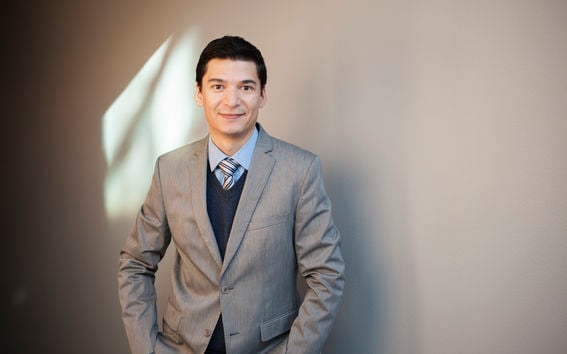Get to know us: Assistant professor Rodrigo Serna

Who are you and what do you do?
My name is Rodrigo Serna and I’m a professor in mineral processing and recycling. My field has to do with the transformation of extracted minerals to useful products and the recovery of valuable materials from waste. I am trying to find new ways in which we engineer the production of raw materials to minimize our impact on the environment.
We work a lot with flotation, which is a process in which air bubbles are used to separate valuable minerals from other useless materials. The process isn’t simple – to get the minerals to attach to the bubbles we need to make them hydrophobic, which means we need to change the surface properties of the minerals. Additionally, we have to change the surface properties of the bubbles to make sure they are strong enough to carry the minerals. Then in the middle of all this, the surface properties of any impurities present must be kept unchanged so that they are cleanly separated from the main product.
What is the main goal of your research group?
Our main goal is to find new ways to produce sufficient raw materials for our modern society. Producing raw materials is very challenging, and we need to do it in a way that is sustainable or has a lower impact on the planet. We cannot extract metals from the ground forever, because these are non-renewable resources. That’s why we need to find ways to improve the already existing processes in the mines and to promote new designs of recycling systems.
How did you become the assistant professor of Mineral Processing and Recycling at Aalto?
After my doctoral degree, I was working in a chemical company BASF in Germany. I liked working in the industry and it taught me a lot, but I always liked the idea that academic freedom gives you the possibility to research concepts or ideas that are your own. In the industry, you are also doing interesting research, but it is inevitably directed to the needs of the company.
I heard about the open position at Aalto University. I really like this country and thought that Aalto would be an interesting place to work. This is an ideal working place for me, as I can pursue my own scientific interests and have many opportunities to collaborate with experts in many fields of knowledge.
What is the most interesting thing in your research field?
At the moment, I find it interesting how much effort is focused on developing real and useful recycling technologies to help the transition towards electrification. For example, we’re trying to introduce new models and parameters to measure the efficiency of recycling processes for batteries and waste electronics from the perspective of the circular economy.
In addition, the implementation of green chemistry into mining is interesting. Mining is considered a very conservative field because they need chemistry with low costs. This is due to the massive scale of the mining sites and the need to make mining profitable. Now, they need to start looking into improving the chemistry in the processes, since mining is not sustainable. We need to approach mining in a way that has a lower impact on the environment.
What is the weirdest or most memorable thing you’ve been able to do while working at Aalto?
Something exciting that happened a while ago has to do with combining green chemistry with minerals processing. We designed some experiments to test cellulose components in flotation to make the process more environmentally friendly. Experiments were conducted by a Summer intern.
During the experiment, I was asked to have a look, because nobody knew what was going on. Usually, with flotation, we get a thin layer of bubbles coming out, however, this layer was really thick and producing much more minerals than the regular flotation methods. That was very exciting because we were testing a concept of green chemistry that was actually improving the process. The challenge at the time was to understand why this was happening and whether this could be reproduced. We have been studying this for a while and it has now become a product with commercialization potential.
What would you tell a high school student about your research field?
I would tell high school student that if they really are interested in the future of the world and highly technological society, they need to start thinking about the need for raw materials. The need will keep increasing all the time and more complex materials will be needed. There is very interesting engineering applied in the raw material production field, and we need exciting scientific discoveries to improve our current practices. If you want to have a significant role in our world, start looking on how to innovate the ways in which we produce these raw materials, to make them more efficient, more sustainable and more socially responsible.
This interview is conducted by Mikaela Kumlin who has been working during the summer at the School of Chemical Engineering.
- Published:
- Updated:
Read more news

Aalto in 2024: Love pictured in the brain, wooden crystals that make fashion shine, recovering minerals from wastewater and more
This year has been another feast of science and art at Aalto University
Pengxin Wang: The internship was an adventure filled with incredible research, unforgettable experiences, and lifelong friendships.
Pengxin Wang’s AScI internship advanced AI research, fostered global friendships, and inspired his journey toward trustworthy AI solutions.
Major grant from the Kone Foundation for modern architecture research - Laura Berger's project equates building loss with biodiversity loss
Aalto University postdoctoral researcher Laura Berger and her team have been awarded a 541 400 euro grant from the Kone Foundation to study the effects of building loss on society and the environment.